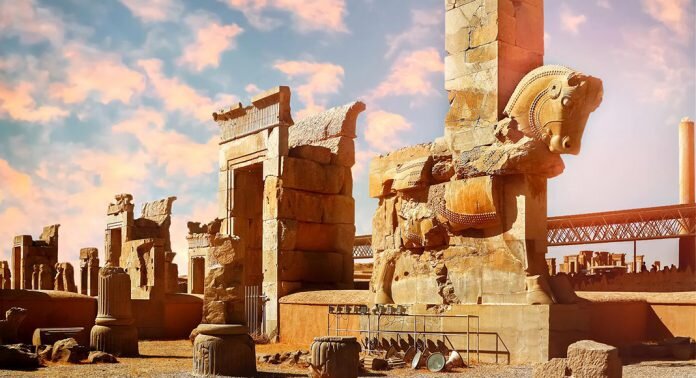Oriental Institute and its Persian expeditions in 1930s

TEHRAN -- During the winter of 1930-31, the Oriental Institute of the University of Chicago organized a Persian Expedition to conduct excavations in the largely unexplored mountainous regions east and southeast of the Mesopotamian plain.
James Henry Breasted requested and was granted, a concession to excavate the remains of Persepolis, an Achaemenid royal administrative center in the province of Fars, according to the Oriental Institute.
Thanks to an anonymous benefactress, work started the same year under the direction of Ernst Herzfeld, Professor of Oriental Archaeology at the University of Berlin. Herzfeld served as director of the Persian Expedition until the end of 1934, when he was succeeded by Erich Schmidt, who continued to excavate in the region until 1939.
Over an eight-year period, the Persian Expedition worked not only in the royal center of Persepolis, but also at a number of sites that fell within a radius of 10 km. - the two prehistoric mounds of Tall-e Bakun, an Achaemenid tower and tombs of the Achaemenid kings at Naqsh-e Rustam, and portions of the Sasanian/Islamic city of Istakhr. In addition, Erich Schmidt led two air-reconnaissance and ground expeditions into the mountains of Lurestan in 1935-36 and 1937.
Persepolis
Persepolis was founded as a royal administrative center by the Achaemenid king Darius I between 520 and 510 BC and was destroyed by the troops of Alexander the Great in 330 BC.
The Oriental Institute cleared and investigated most of the buildings that stand on the Achaemenid terrace, including the gatehouse of King Xerxes, the great audience hall (Apadana) with its monumental eastern stairway begun by Darius and finished by Xerxes; the treasury of the Persian kings; the residential areas; and fortifications including garrison quarters along the eastern edge of the terrace.
Tall-e Bakun
The Oriental Institute excavated the two low mounds of Tall-e Bakun, southeast of Persepolis, in 1932 and 1937. Mound A was found to contain at least four levels of prehistoric houses dating roughly to 4000 BC.
The main level was surprisingly well preserved, suggesting a sudden abandonment of the settlement. The walls of some of the houses were preserved to a height of 6-7 feet and bore the remains of geometric wall paintings in red and yellow. Resting on the floors, as though still in use, were knives and other household utensils, including cooking pots that still contained the bones of the meat that was being prepared in them. Much of the pottery found on Mound A bore elaborate painted designs of extraordinary beauty and sophistication.
Mound B was comprised of earlier remains (ca. 4600 BC) of a culture that used only unpainted wares.
Naqsh-e Rustam
Over the course of several seasons, the Persian Expedition conducted archaeological excavations at Naqsh-e Rustam and recorded the major monuments on the site.
Darius the Great and his three successors chose the imposing cliff face at Naqsh-e Rustam, north of Persepolis, as the site of their rock-cut tombs. Near these tombs stands a square tower, which may have been built by Darius I to shelter the royal fire of the Achaemenid monarchs. Both the tower and the royal tombs were enclosed in a sacred precinct, whose outer wall, with rounded towers, was traced by Herzfeld. Further Oriental Institute excavations within the precinct revealed occupation extending from the Achaemenid into the Early Islamic period (ca. 500 BC-800 CE).
During the early Sasanian period (third-fourth centuries CE), numerous reliefs were carved into the foot of the rock-cut tombs, indicating that the site continued to play a significant role during the reigns of later rulers.
Flights over ancient Iranian cities and the Holmes expeditions to Lurestan
On August 7, 1935, a Waco biplane, donated by Erich Schmidt’s wife, Mary-Helen Warden Schmidt, arrived in Teheran. Over the next two years, Schmidt used the plane, which he christened “Friend of Iran,” to photographically document the sites he was excavating and to make aerial explorations of other parts of the country.
In 1935-36 and 1937, Erich Schmidt led two expeditions into the rugged mountains of Lurestan. Both endeavors combined aerial surveys from the plane with archaeological excavations in an attempt to learn as much as possible about this little explored region of Iran.
In addition, the group prepared maps and compiled data concerning temperature, altitude, landscape, and the local population. They conducted brief excavations at more than a dozen sites, one of the most interesting of which was Surkh Dum-e Luri in the Kuhdasht plain.
Here they cleared several levels of a sanctuary dating to the first half of the first millennium BC. The shrine contained quantities of votive offerings to the goddess Ninlil, including cylinder and stamp seals and quantities of bronze pins with elaborately decorated heads.
The Oriental Institute’s collection of bronzes from Surkh Dum-e Luri is a unique corpus. It is the only large collection of excavated Lurestan bronzes in the world. The vast majority of “Lurestan Bronzes” are of unknown origin, and forgeries are common among them. The Oriental Institute’s collection plays a pivotal role in all efforts to define the characteristics - both stylistic and scientific - of excavated Lurestan bronzes against which those purchased on the art-market can be evaluated.
Clay tablets returned home after 84 years
In 2019, a total of 1,783 Achaemenid-era clay tablets, which were on loan from Iran to the Oriental Institute of the University of Chicago since 1935, were returned home.

It was the fourth batch of the Achaemenid objects which were recuperated with great deal of efforts made by the Ministry of Cultural Heritage, Tourism and Handicrafts and the presidential office for legal affairs, according to the tourism minister, Ali-Asghar Mounesan.
In February 2018, and following years of ups and downs, the fate of those ancient Persian artifacts, was left in the hands of a U.S. Supreme Court, which ruled in favor of Iran.
AFM/
Leave a Comment